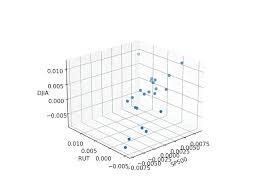
In a new study published in The Journal of Finance and Data Science, a researcher from the International School of Business at HAN University of Applied Sciences in the Netherlands introduced the topological tail dependence theory—a new methodology for predicting stock market volatility in times of turbulence.
“The research bridges the gap between the abstract field of topology and the practical world of finance. What’s truly exciting is that this merger has provided us with a powerful tool to better understand and predict stock market behaviour during turbulent times,” said Hugo Gobato Souto, sole author of the study.
Through empirical tests, Souto demonstrated that the incorporation of persistent homology (PH) information significantly enhances the accuracy of non-linear and neural network models in forecasting stock market volatility during turbulent periods.
“These findings signal a significant shift in the world of financial forecasting, offering more reliable tools for investors, financial institutions and economists,” added Souto.
Notably, the approach sidesteps the barrier of dimensionality, making it particularly useful for detecting complex correlations and nonlinear patterns that often elude conventional methods.
“It was fascinating to observe the consistent improvements in forecasting accuracy, particularly during the 2020 crisis,” said Souto.
The findings are not confined to one specific type of model. It spans across various models, from linear to non-linear, and even advanced neural network models. These findings open the door to improved financial forecasting across the board.
“The findings confirm the theory’s validity and encourage the scientific community to delve deeper into this exciting new intersection of mathematics and finance,” concluded Souto.
For more such insights, log into our website https://international-maths-challenge.com
Credit of the article given to KeAi Communications Co.

